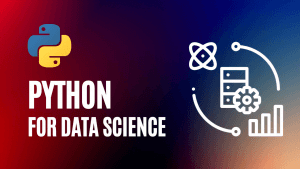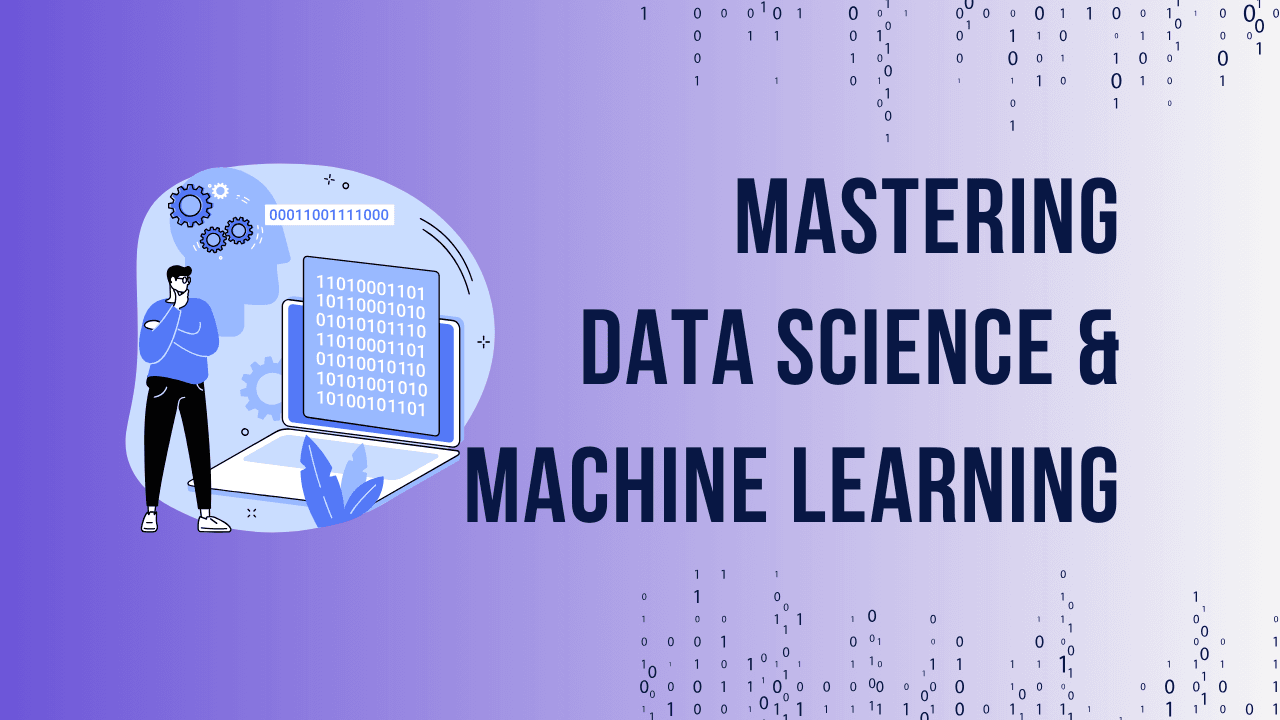Python is a leading programming language in data science, renowned for its simplicity, versatility, and robust libraries like Pandas, NumPy, and Scikit-learn. Its popularity in data science has surged due to its ability to handle large datasets, perform complex calculations, and visualize data efficiently.
However, even experienced developers can stumble upon common pitfalls when using Python for data science projects. These mistakes can lead to inefficient code, inaccurate data analysis, and ultimately, flawed insights. This article explores some of the most frequent Python mistakes in data science and how to avoid them.
Ready to take your data analysis skills to the next level? Check out our comprehensive Python for Data Science Course!
Choosing the Wrong Data Types
Integer vs. Float Confusion
One of the first steps in any data science project is choosing the correct data types. A common mistake is confusing integers and floats, leading to inaccurate calculations and data processing errors. For instance, using an integer instead of a float can cause division errors in Python, as dividing two integers will result in an integer in Python 2.x (e.g., 3/2 = 1), while Python 3.x returns a float.
Mutable vs. Immutable Types
Another frequent error is misunderstanding mutable and immutable types. Lists, for instance, are mutable, meaning their contents can be altered, whereas tuples are immutable. Misusing these types can lead to unintended side effects, especially when passing data between functions.
Ready to take your data analysis skills to the next level? Check out our comprehensive Python for Data Science Course!
Ignoring Python's Built-in Functions
Reinventing the Wheel
Python offers a rich set of built-in functions that can simplify many tasks. A common mistake is reinventing the wheel by writing custom functions for tasks that Python’s standard library can handle more efficiently. This not only wastes time but can also introduce bugs.
Missing Out on Pythonic Solutions
Pythonic solutions leverage the language’s idioms and built-in functions to write clean, efficient, and readable code. Ignoring these solutions can lead to code that is less readable and harder to maintain. For instance, using sum() instead of a manual loop to add numbers in a list is more Pythonic.
Inadequate Data Cleaning
Overlooking Null Values
In data science, cleaning the dataset is crucial. One of the biggest mistakes is overlooking null values, which can distort analysis and model predictions. Using functions like isnull() and dropna() in Pandas can help in identifying and handling missing data effectively
Failing to Normalize Data
Data normalization is another critical step often neglected. Failing to scale data before feeding it into a model can lead to biased predictions, especially in algorithms sensitive to the magnitude of data, such as K-Nearest Neighbors.
Inefficient Use of Loops
Overusing For Loops
Overusing for loops in Python can make the code inefficient, especially when dealing with large datasets. Python’s list comprehensions or the map() function are often faster and more readable alternatives for iterating over data.
Ignoring List Comprehensions
List comprehensions offer a concise way to create lists and perform operations on them. Ignoring this feature can lead to verbose and less efficient code. For example, [x**2 for x in range(10)] is more efficient and readable than using a for loop to achieve the same result.
Mismanaging Libraries and Dependencies
Failing to Pin Dependencies
When working on data science projects, it’s essential to manage libraries and dependencies carefully. A common mistake is failing to pin dependencies, which can lead to compatibility issues when different versions of libraries are used. Tools like pip allow you to specify exact versions of packages to ensure consistency.
Ignoring Virtual Environments
Ignoring virtual environments is another critical mistake. Virtual environments help isolate dependencies for different projects, preventing conflicts between libraries. Using venv or conda can help maintain a clean and organized project structure.
Poor Error Handling
Ignoring Exceptions
Handling exceptions properly is crucial in Python. Ignoring exceptions or using generic exception handling (e.g., except Exception as e) can make debugging difficult and mask underlying issues in the code. It’s better to catch specific exceptions and handle them appropriately.
Using Generic Exception Handling
Using a generic except clause without specifying the exception type can catch unintended errors and lead to unforeseen problems. It’s best practice to handle specific exceptions like ValueError or TypeError to make the code more robust and easier to debug.
Neglecting Version Control
Not Using Git for Code Management
Version control is essential for tracking changes and collaborating on data science projects. Not using Git or another version control system can lead to confusion and loss of progress. Git allows you to track changes, revert to previous versions, and collaborate with others seamlessly.
Failing to Commit Regularly
Even if you are using Git, failing to commit regularly can be problematic. Regular commits help in tracking incremental changes and make it easier to identify where issues were introduced. It also aids in maintaining a clear project history.
Lack of Code Documentation
Writing Unclear Comments
Clear comments are vital for making the code understandable to others (and your future self). Writing vague or unnecessary comments can lead to confusion and make the code harder to maintain. It’s important to write comments that explain the “why” behind the code, not just the “what.”
Ignoring Docstrings
Docstrings are an excellent way to document functions and classes in Python. Ignoring them can make it difficult for others to understand how to use your code. Including detailed docstrings with examples can significantly improve the usability of your code.
Ready to take your data analysis skills to the next level? Check out our comprehensive Python for Data Science Course!
Overcomplicating Simple Problems
Writing Overly Complex Code
Python is known for its simplicity, and one of the biggest mistakes is writing overly complex code when a simpler solution exists. This can make the code harder to read, maintain, and debug. The principle of KISS (Keep It Simple, Stupid) is essential to follow.
Not Following the “Zen of Python”
The “Zen of Python” is a collection of guiding principles for writing computer programs in Python. Not following these principles can lead to code that is difficult to read and maintain. Some of these principles include “Simple is better than complex” and “Readability counts.”
Misusing Data Structures
Using Lists Instead of Sets
In Python, lists are commonly used, but they are not always the most efficient choice. For example, when you need to store unique elements and perform frequent membership checks, sets are a better option. Using a list in such cases can lead to slower performance and increased memory usage.
Ignoring Dictionaries for Key-Value Pairs
Dictionaries are powerful data structures in Python that allow for quick lookups, inserts, and deletions. Ignoring dictionaries when dealing with key-value pairs can result in inefficient code. For example, using a list of tuples instead of a dictionary for key-value storage can lead to slower operations.
Conclusion
Recap of Key Mistakes
Avoiding common Python mistakes in data science projects can significantly enhance the efficiency and accuracy of your work. From choosing the correct data types to properly managing libraries and dependencies, each step plays a critical role in the success of your project.
Final Thoughts and Best Practices
To minimize errors, always aim to write clean, readable, and well-documented code. Use Pythonic solutions where possible, manage your dependencies carefully, and never skip on testing. By adhering to best practices, you can ensure that your data science projects are both efficient and effective.
FAQs
1. What are some common Python mistakes in data science projects?
- Common mistakes include using incorrect data types, inefficient looping, improper error handling, and not testing code adequately. These errors can lead to slow performance, bugs, and inaccurate results.
2. Why is using the wrong data type a problem in Python?
- Using the wrong data type can lead to inefficient memory usage and slower performance. For instance, using a list when a set would be more appropriate can significantly increase the time complexity of your code.
3. How can I avoid inefficient looping in Python?
- To avoid inefficient looping, use Python’s built-in functions like
map,filter, and list comprehensions. These are optimized for performance and can significantly reduce the time your loops take to execute.
4. What are the best practices for error handling in Python?
- Best practices include using
try-exceptblocks to catch exceptions, raising exceptions with informative messages, and avoiding overly broad exception handling. This ensures that your code fails gracefully and is easier to debug.
5. How important is testing in Python, and what should I test?
- Testing is crucial for ensuring that your code works as expected. You should test individual functions (unit testing), edge cases, and the overall functionality of your code. This helps prevent bugs and makes future code updates easier.
Ready to take your data analysis skills to the next level? Check out our comprehensive Python for Data Science Course!



